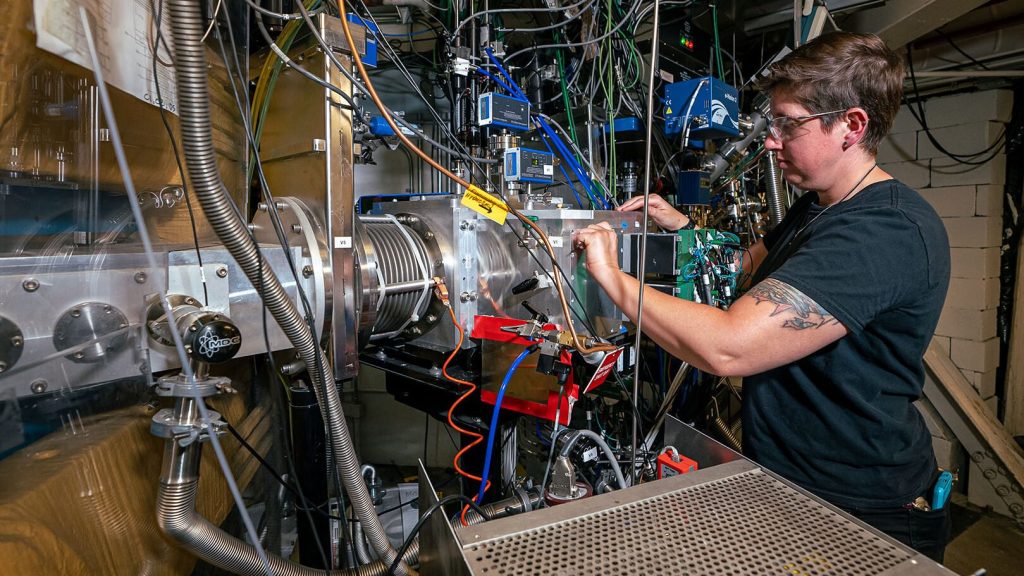A team of scientists at the Lawrence Berkeley National Laboratory in California announced today that they have produced livermorium (element number 116) for the first time using a beam of titanium particles.
The achievement brings scientists closer to the island of stability — the point where superheavy elements are theorized to be long-lived — making them easier to study.
“We wanted nature to be kind to us, and nature was kind to us,” Rainer Kruecken, director of nuclear sciences at Berkeley Lab, said in a statement from the lab. “We estimate it will take about 10 times longer to make 120 than it will to make 116. It’s not easy, but it’s now doable.”
The team’s findings were announced today, Nuclear Structure 2024 The paper will be presented at the conference. The team’s paper will soon be published in the preprint repository arXiv. Physics Review Letter.
Titanium beam produces element 116
The researchers used a beam of titanium-50 (a specific isotope of the element) to create livermorium, atomic number 116. They were successful, making livermorium the heaviest element ever created at Berkeley Lab, whose researchers have been involved in the discovery of 16 other elements, ranging from technetium (43) to seaborgium (106).
“We are confident that we are observing element 116 and its daughter particle,” Berkeley Lab nuclear scientist Jacqueline Gates, who led the recent study, said in the same announcement. “The chance of this being a statistical coincidence is about one in a trillion.”
To turn the titanium into a beam, the scientists heated a block of titanium until it began to vaporize at nearly 3,000 degrees Fahrenheit (1,649 degrees Celsius). The team then bombarded the titanium with microwaves to remove 22 electrons, preparing the ions to be accelerated in Berkeley Lab’s accelerator. 88-inch cyclotron.
The titanium ions were aimed at a target (in this case, plutonium), and trillions of ions per second bombarded the target, fusing them into an entirely different element. The team ultimately produced two livermorium atoms in 22 days of work. The use of titanium in the beam is a new way of producing heavier elements; previously, elements 114 to 118 were produced with a beam of calcium-48.
“We are at the edge of human knowledge and understanding when trying to make these extremely rare elements, and there is no guarantee that the physics will work the way we expect,” said Jennifer Pore, an atomic physicist in Berkeley Lab’s Heavy Elements Group. “Making element 116 with titanium proves that this manufacturing method works, and we can now plan our search for element 120.”

Next up: the search for element 120
If the team is successful, they will have created the heaviest atom yet — element 120. Element 120 would be part of a so-called island of stability, a class of superheavy elements that will last longer than any previously discovered superheavy elements.
The lab said efforts to make element 120 could begin as soon as 2025, after which it would take several years to create the element if the team is successful. Physicists are working deep into the periodic table with the goal of finding the heavier, longer-lived limits of atoms.


